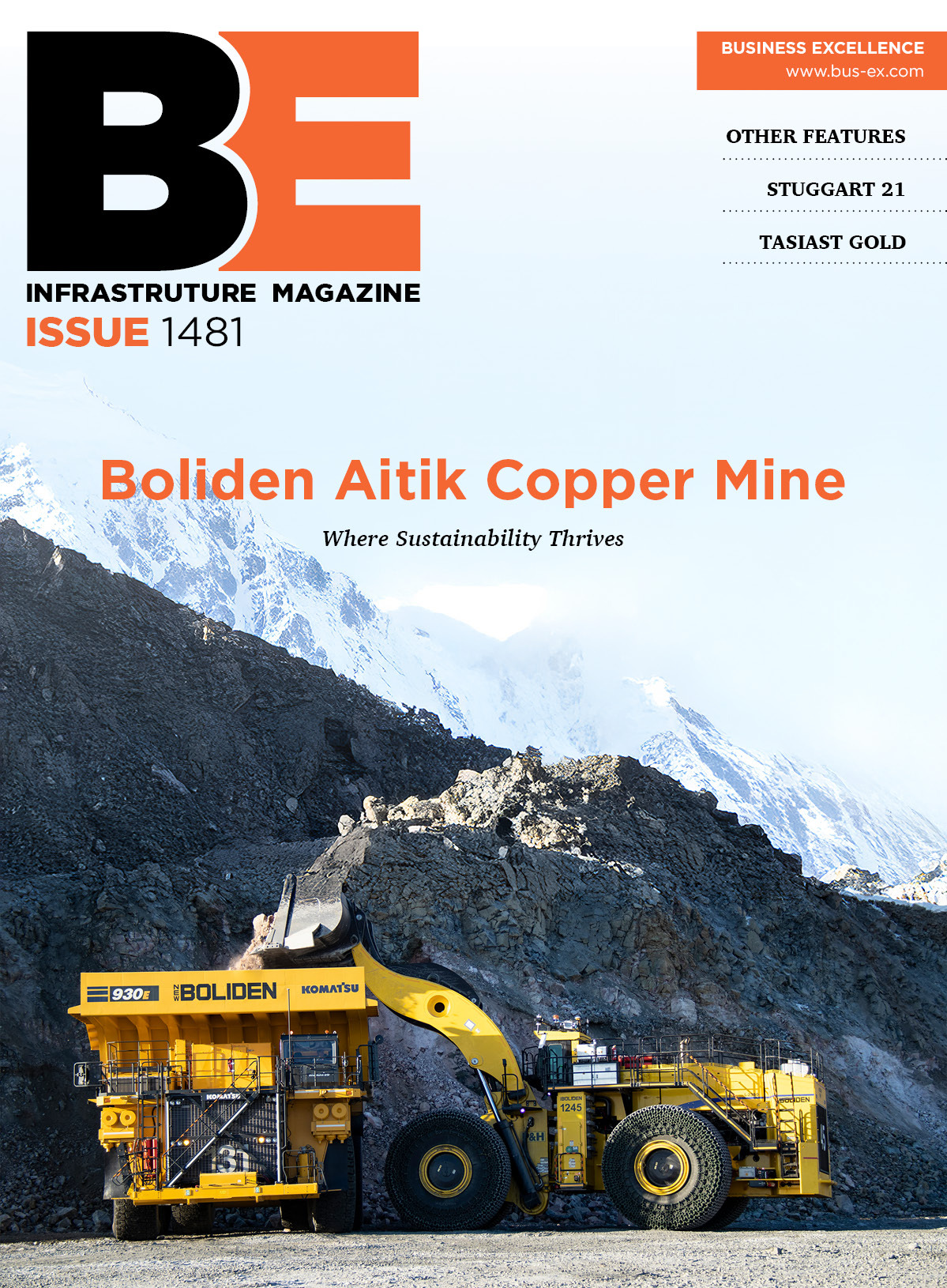Engineered sculpture
The Al Hamra Tower is going to be the tallest building in Kuwait when finished in 2010 and an outstanding project for its general contractor Ahmadiah Construction, as project director Hani Abuhaidar explains to John OÔÇÖHanlon.
Since its invasion by Iraq in 1990, Kuwait has blossomed to become the third-richest country in the world, with a GDP of nearly $140 billion. Back in the 1950s, when Ahmadiah Construction was founded, Kuwait was a very different place, already the largest oil exporter in the region but with more industry than infrastructure. The company has since had a hand in every aspect of development including roads, industrial installations, as well as a good number of high-rise buildings, shopping malls, hotels, hospitals, etc.
Space for development is hard to come by in Kuwait City. In 2005, when work started to redevelop the Firdous cinema site into a shopping mall with car parking and a 40-storey office complex, reactions were mixed. The cinema is important to Kuwaitis, and many were unhappy at the prospect of losing something that had been a popular resource for decades. At the time the government wouldnÔÇÖt allow tall buildings to exceed 40 storeys, so the development was somewhat modest by current Middle East standards. ÔÇ£But then the height restriction was lifted, so we realised that we could do something really amazing on the site,ÔÇØ says Hani Abuhaidar. ÔÇ£With this pressure on land, added to the fact that this site is right at the center of the city, it made sense to go as high as possible and make it the focal point for Kuwait, so the original design was scrapped.ÔÇØ
It was at this point that the US firm Skidmore, Owings & Merrill (SOM) was called in to come up with a suitably enhanced design for the office tower, linked to the 38,000 square-metre shopping mall and multi-storey car park.
You canÔÇÖt really go further up-market if you want a skyscraper: to list SOMÔÇÖs design impact on the worldÔÇÖs cities would take a long time, so to name the Sears Tower in its home city of Chicago and Burj DubaiÔÇöthe worldÔÇÖs tallest building, a few hundred miles down the Persian GulfÔÇöwill suffice. However, several attempts on design concepts were made by M/s. SOM before the final design, a glass-faced structure folded around a central core, was accepted. ItÔÇÖs 412 metres high, placing it among the worldÔÇÖs ten highest skyscrapers and definitely the tallest in Kuwait, with 77 storeysÔÇöequivalent to 95 in a conventional office building, when you take into consideration the lofty Sky Lounges and rooftop restaurant at its peak. It has 40 elevators, parking for 2,000 cars, a high-end shopping mall, and will house a hotel as well as offices and restaurants.
A building this high has to have a reliable base, especially in terrain that consists largely of dense sand, with very little in the way of bedrock. ÔÇ£The foundations consist of 300 concrete piles, each 1.2 metres in diameter and between 22 and 27 metres long,ÔÇØ says Abuhaidar. ÔÇ£On top of these we have a four metre thick raft, and the raft and piles work together to support the building.ÔÇØ
At this stage Ahmadiah Construction faced a technical problem with the need to limit to 72o Celsius the temperature rise as the concrete hydrates. The greater the mass of concrete, the hotter it gets. Added to that, the raft was poured in the summer, when ambient temperatures in Kuwait are frequently over 47┬░C. ÔÇ£We looked at a number of different ways through this problem,ÔÇØ says Abuhaidar. ÔÇ£The traditional way would be to build in a network of cooling pipes to carry away the heat, but to do that you need a cold water source nearby, maybe a river, and this is Kuwait.ÔÇØ
After doing some research, the team decided to change the concrete mix radically, replacing a big percentage of the cement with fly ash and microsilica, both very fine by-products of combustion. These particles make the concrete stronger, more durable and more resistant to chemical attack. They require less water and take longer to hydrate than cement, so in this case the plan was to spread the temperature rise and reduce the peak.  
Co-operation between architect and contractor has been exemplary, as it needed to be, given the initial design delay. However, Ahmadiah Construction and SOM didnÔÇÖt always agree. An intriguing example Abuhaidar gives is the two-metre ÔÇÿzipper zoneÔÇÖ that had to be left uncast between the tower and the mall to allow the former to settle without affecting the foundation of the adjacent building. ÔÇ£We tested the piles to 3,000 tons, from which we worked out that the piles would perform individually and settlement would be around 40 millimetres,ÔÇØ says Abuhaidar. ÔÇ£SOM thought it should be more and hired a specialist to peer-review the analysis, concluding that the piles would act as a single entity and around 150mm settlement could be expected.ÔÇØ Quite a difference, but Ahmadiah Construction did further research and stuck to its guns. ÔÇ£To cut a long story short, with 80 percent of the tower completed, total settlement is currently about 27mm and should not exceed 30mm.ÔÇØ
Abuhaidar is on schedule with the construction, with 1,500 people currently working on site. Quite an achievement, since a major redesign had to be made. ÔÇ£The building was designed to have a 12-metre column-free space round the core, but the main entrance is bigger than that,ÔÇØ he explains. ÔÇ£So we ended up with seven columns inside that space. The owner wanted the 20-metre-wide entrance to be column free.ÔÇØ How then could this be achieved and transmit the huge load laterally rather than vertically?
ÔÇ£M/s. SOM finally decided to take these seven columns and gradually, over the first fifteen floors, shift them 8 metres outward so that on the ground floor they are outside the building. On the upper floors, with a height of 4.2 metres, we didnÔÇÖt have a problem, but the entrance hall is 24 metres high, and there the columns had to be tied to the core somehow.ÔÇØ
In the end, a complex ÔÇÿlamellaÔÇÖ canopy in unclad reinforced concrete was formed and installed. ItÔÇÖs terrific engineering, having to incorporate a sliding connection at the core itself to allow for settlement; it is also very beautiful, as our illustration shows. But it meant that the entrance hall alone took more than a year to complete.
The marriage of function and design permeate the entire Al Hamra project at every point, though the stunning entrance lamella is what most people will probably notice. Another example is in the cladding, which is in Jura stone from Germany, both in 40mm thick stone mechanically fixed to flat walls and mosaic panels in the same material glued to flaring curved walls.
Right now the Al Hamra Tower already dominates Kuwait, having reached the 70th floor. The 11-storey car park is currently nine floors overground, while the shopping centre has been completed. Topping-out is scheduled for late 2009, with the Tower opening in the 4th quarter of 2010. Kuwaitis will love itÔÇönot least because it gives them no fewer than nine cinemas to replace their beloved Al-Hamra and Firdous picture house.









